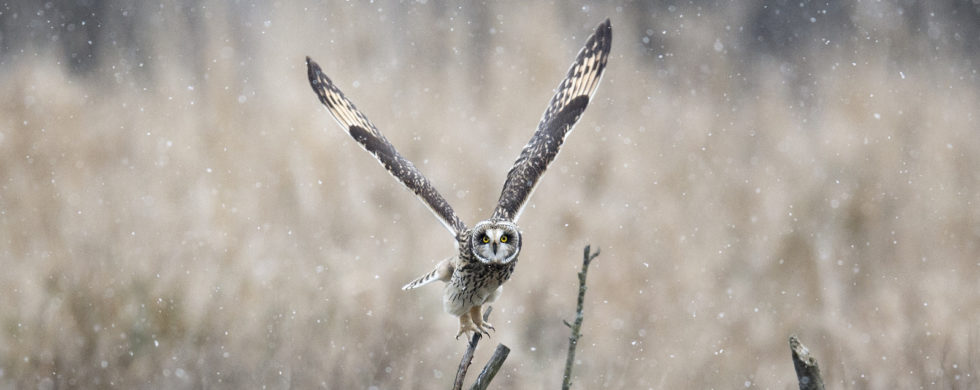
31
2017Murderous Moths
Shot of the Month – January 2017
As you may recall from an earlier post, I am a BIG fan of owls so it is an exciting day when I get to add a new owl species to my portfolio. Let me introduce the Short-eared Owl (SEO), as captured here in this lovely winter scene that I found about an hour north of Seattle. Upon moving to Washington State I learned that Short-eared Owls (SEOs) winter over in my new state to escape the cold of northern Canada. Accordingly, I have been spending many a chilly weekend out looking for these aerial acrobats.
Owls can be very hard to photograph as they are usually most active at night. SEOs are one of the easier owls to view, relatively speaking, in that they often hunt during the day. Bless them.
The Short-eared Owl prefers open terrain and can be found in prairies, coastal grasslands, meadows, savannas, tundra, marshes, and other low-vegetation habitats.
These owls specialize in hunting voles and other rodents. The owl usually flies just a few feet off the ground as it scans for a meal — its flight can be highly erratic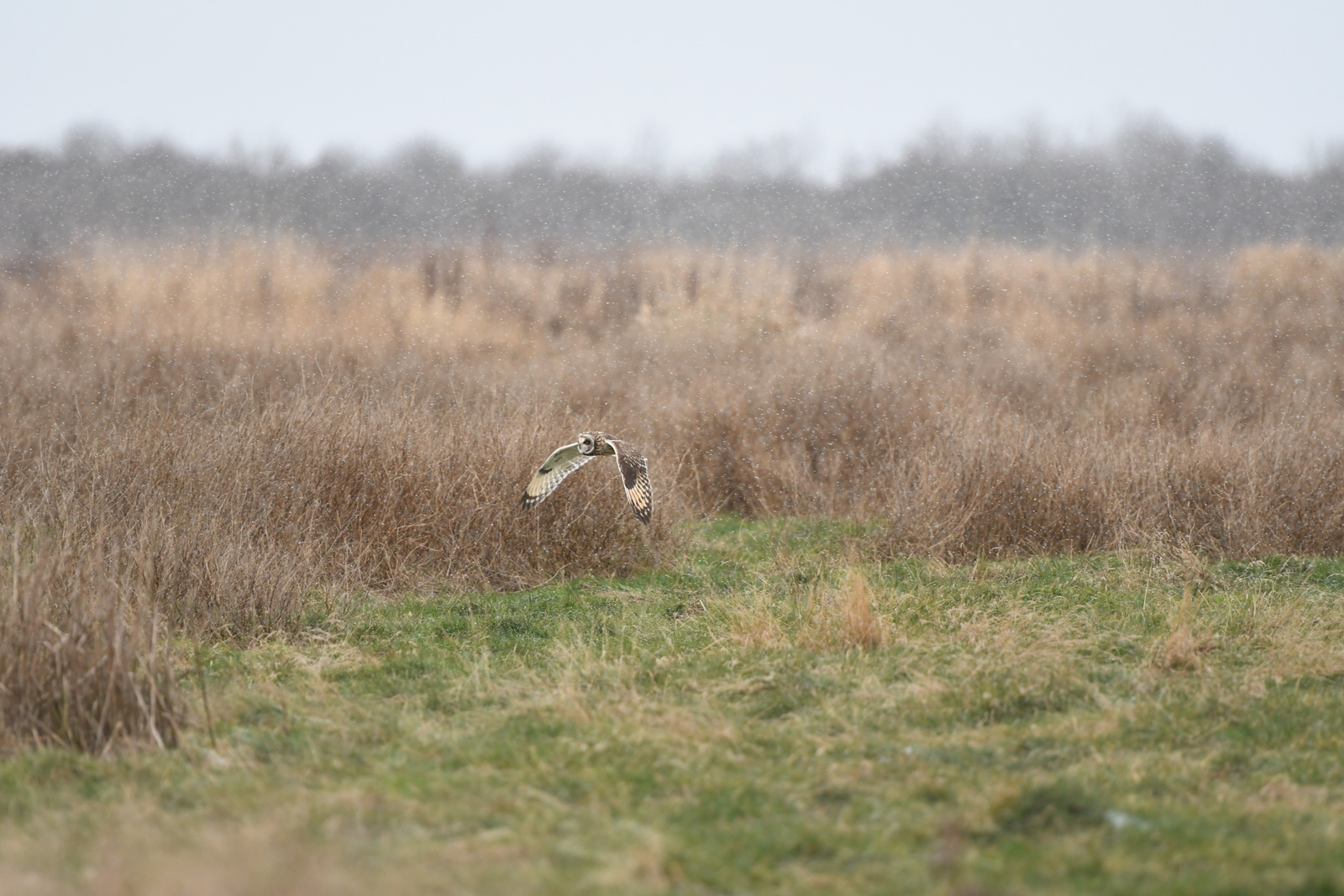
and undulating. As it listens and looks for prey it may suddenly bank to one side or another, or slam on its air brakes to drop to the ground feet first to grab its victim. Sometimes it will hover over a spot as it waits for an opportunity to pounce.
Imagine a large moth flying over a field and you will have a sense of its herky-jerky flying style. As a photographer, I can tell you that trying to capture an image of an SEO in flight is one of the most difficult types of photography I have tried to do. I will be tracking it, tracking it, just about ready to release the shutter, and then, poof, the bird vanishes from the viewfinder. This happens A LOT.
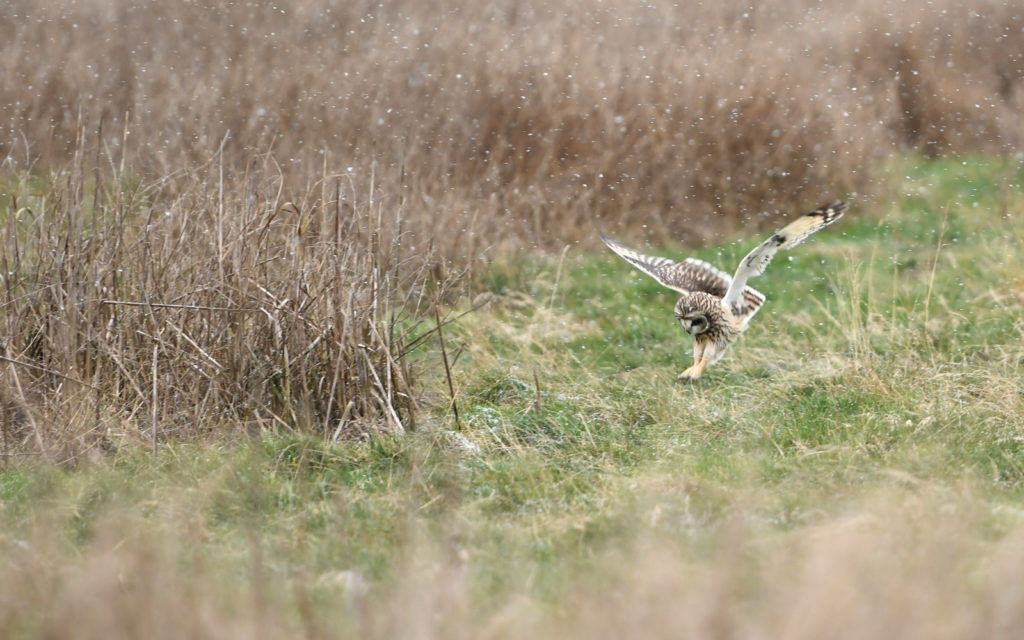 On a typical day, I will arrive at sunrise and take up a position in the field. And then I wait. As the sun rises, and the voles and mice become more active, the SEOs suddenly appear from the ether. I have seen as many as seven SEOs working a large field at the same time. The owls crisscross their way over the terrain in sortie after sortie as they look for prey. It is an amazing scene to behold though it must be a rather terrifying experience if you are a vole.
On a typical day, I will arrive at sunrise and take up a position in the field. And then I wait. As the sun rises, and the voles and mice become more active, the SEOs suddenly appear from the ether. I have seen as many as seven SEOs working a large field at the same time. The owls crisscross their way over the terrain in sortie after sortie as they look for prey. It is an amazing scene to behold though it must be a rather terrifying experience if you are a vole.
The airspace above these fields will soon fall quiet as the owls begin to migrate back north for mating season which starts in March. I imagine that spring can’t come soon enough for the voles — a few months respite from the constant onslaught from those malevolent, murderous moths.
Until next month…
Nikon D4S, Nikon 600mm f/4, 1/1600 s, ISO 1600, +0.5 EV

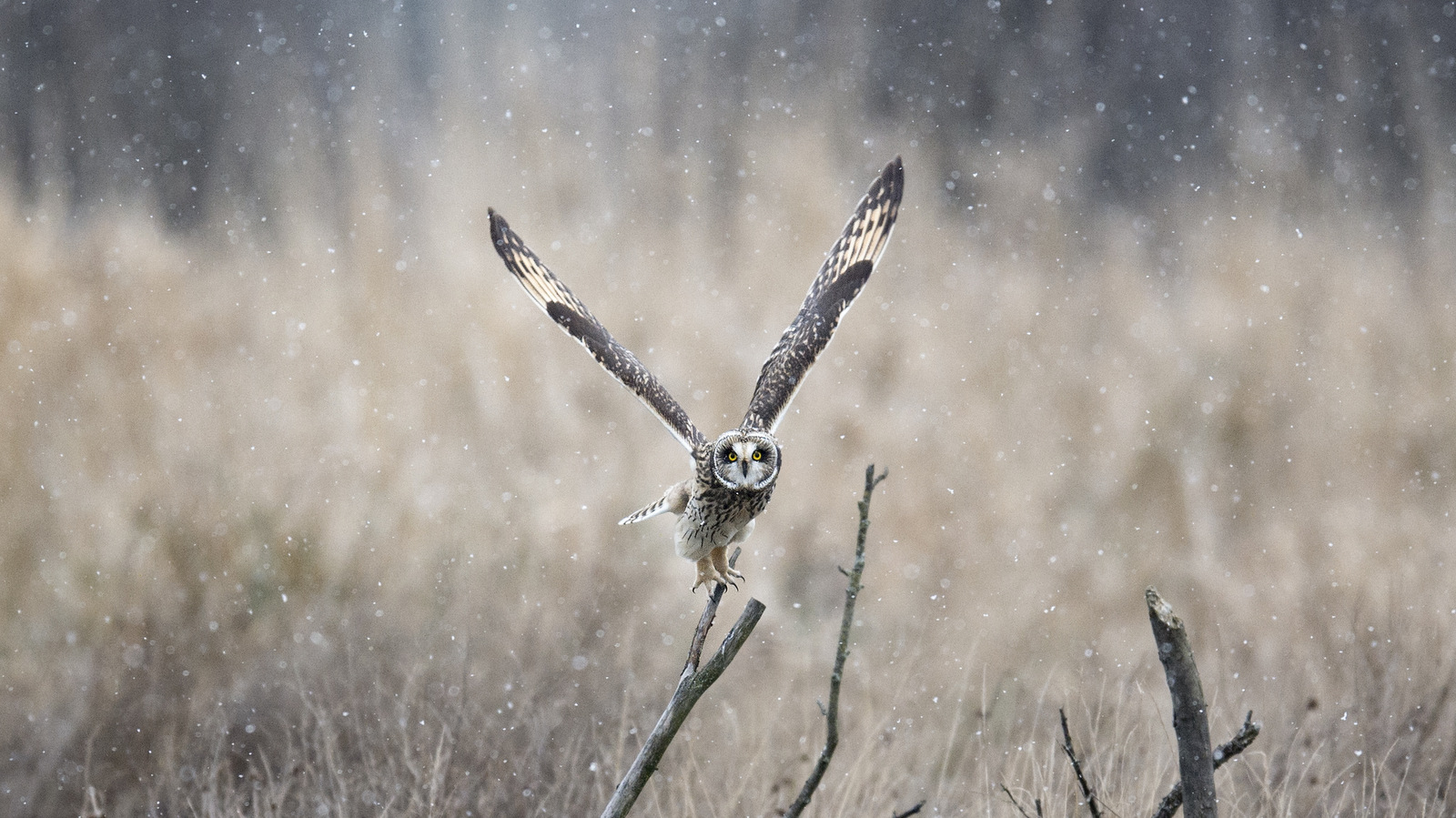
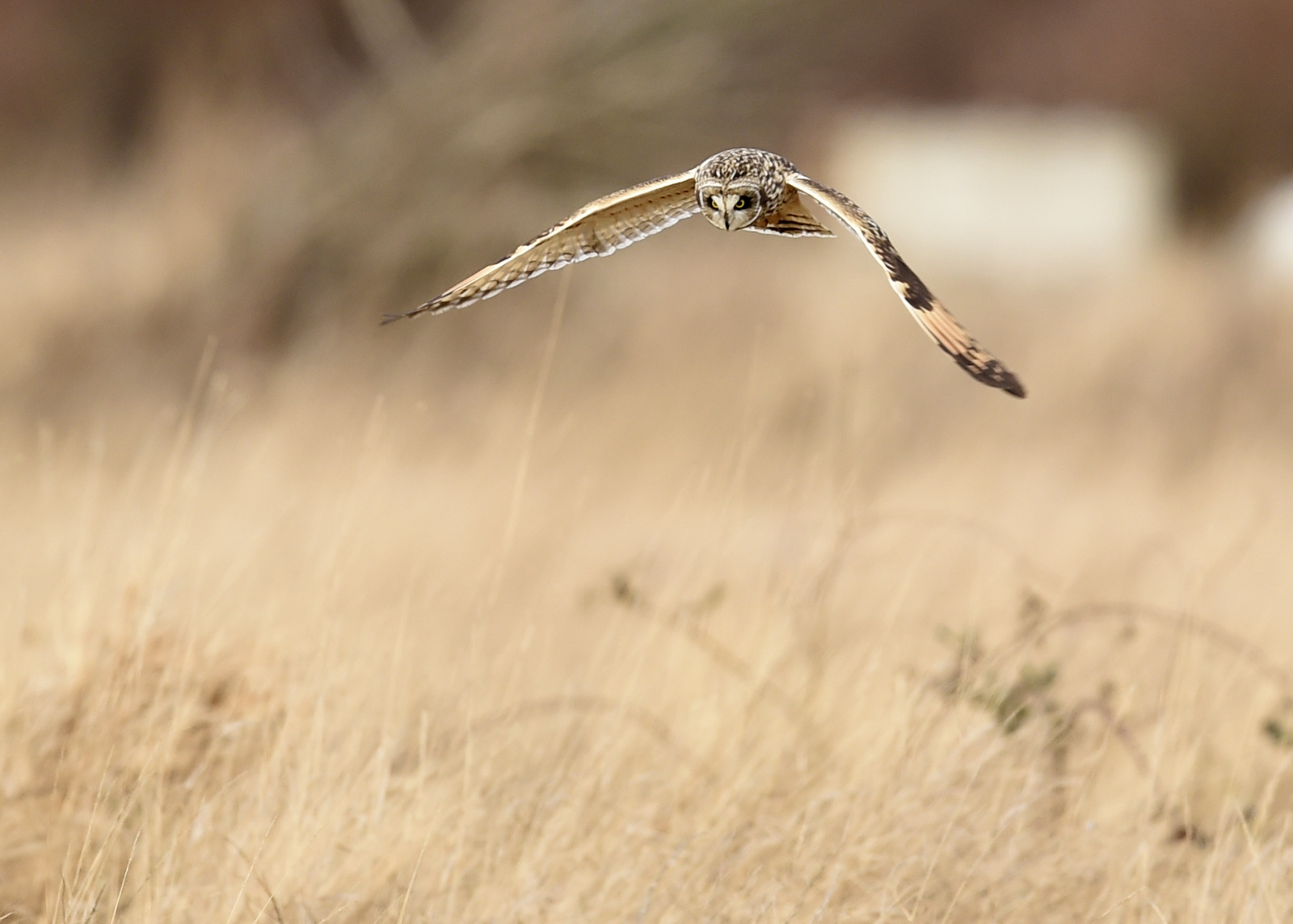
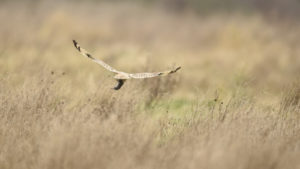
Janet Harris
Fantastic shots, feels like I’m right there!